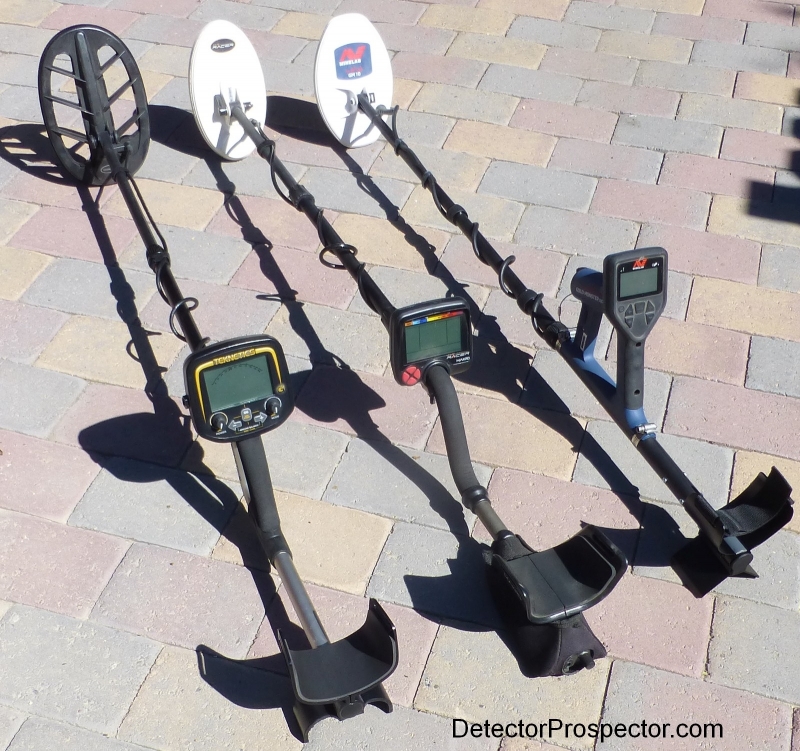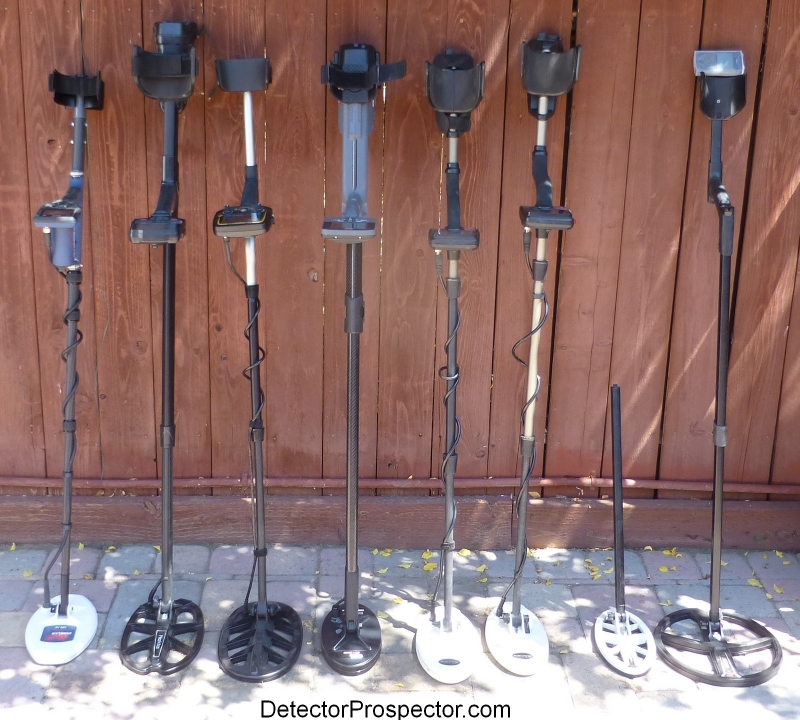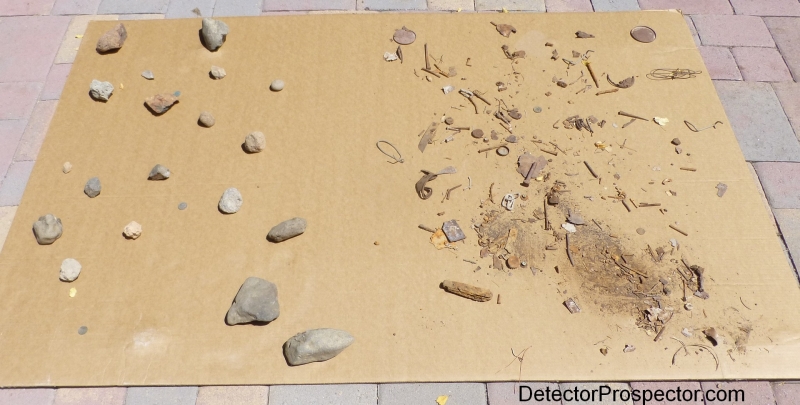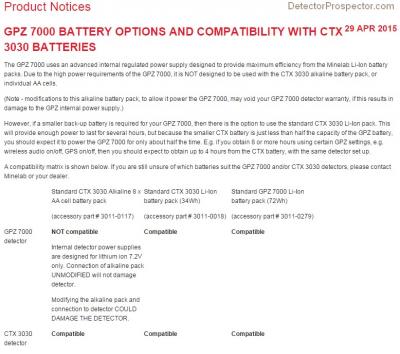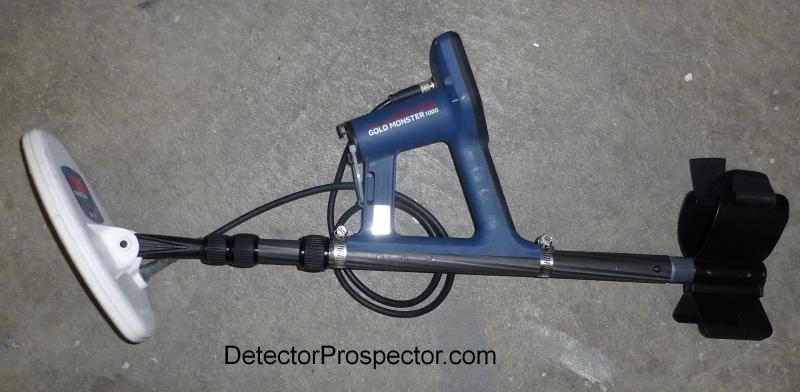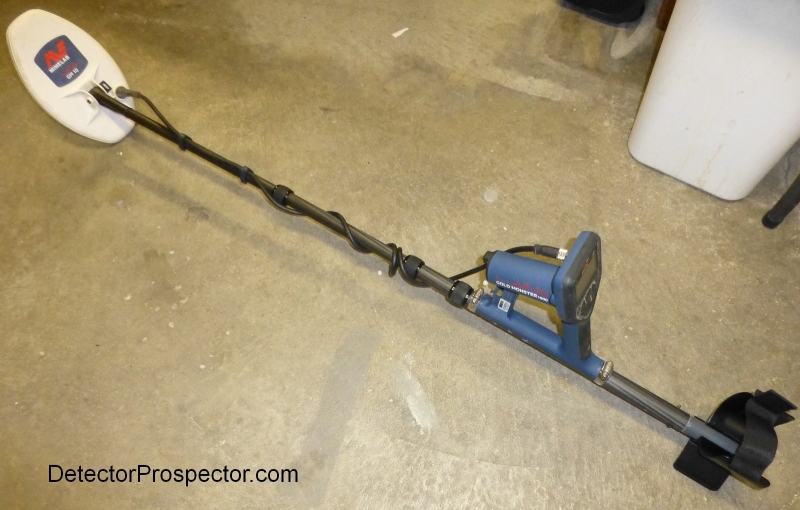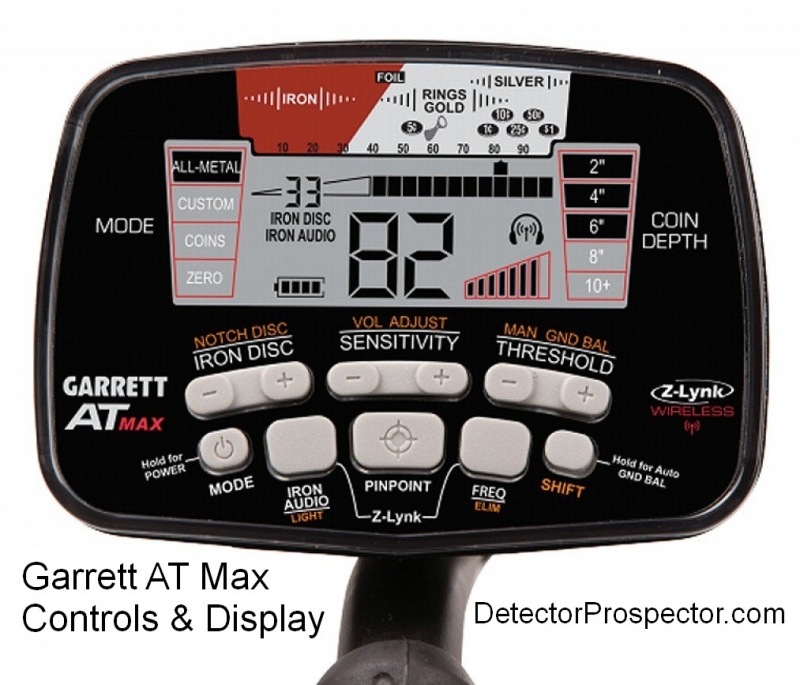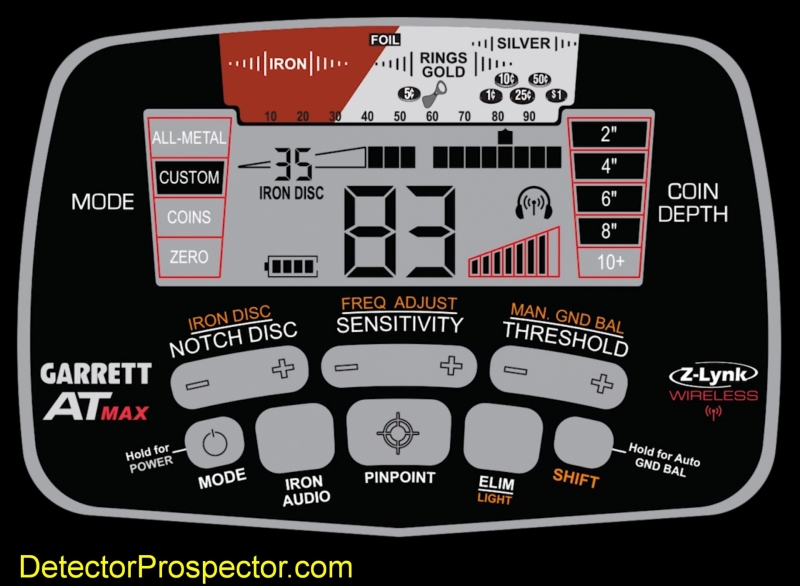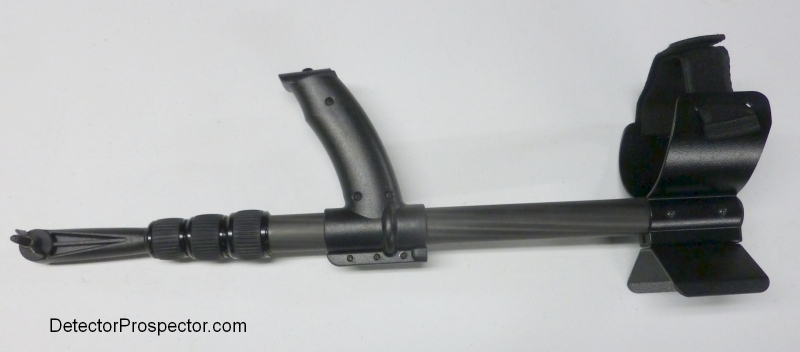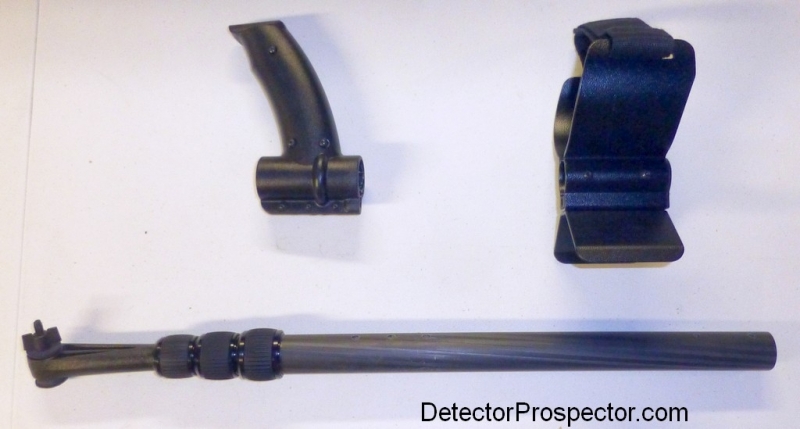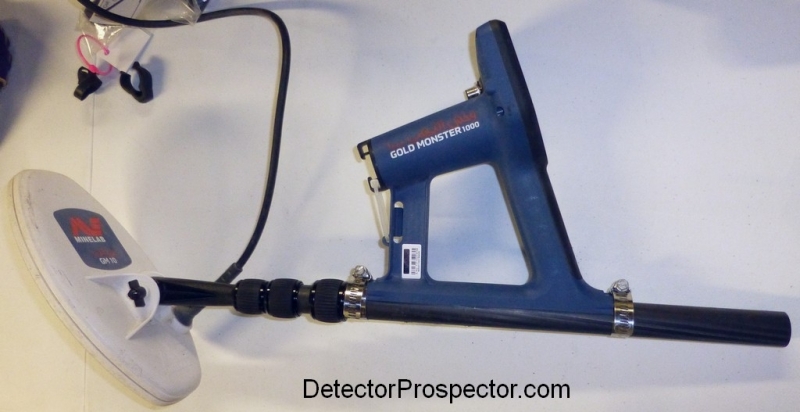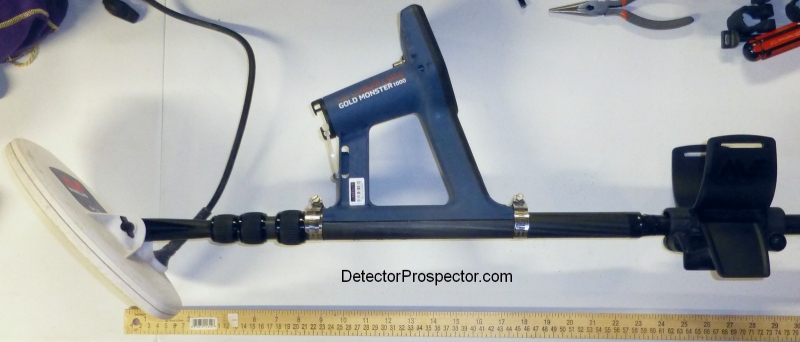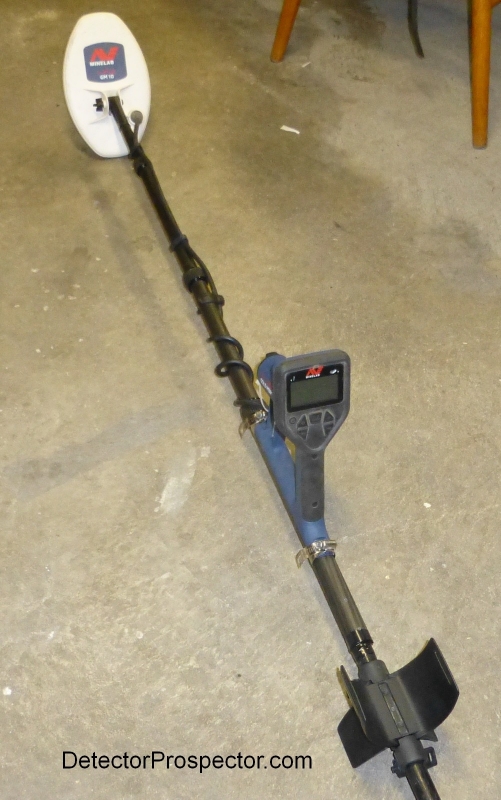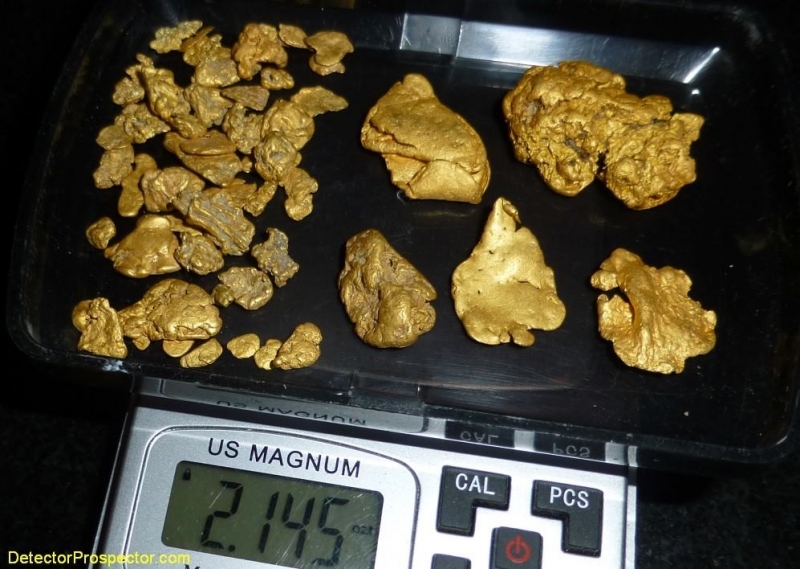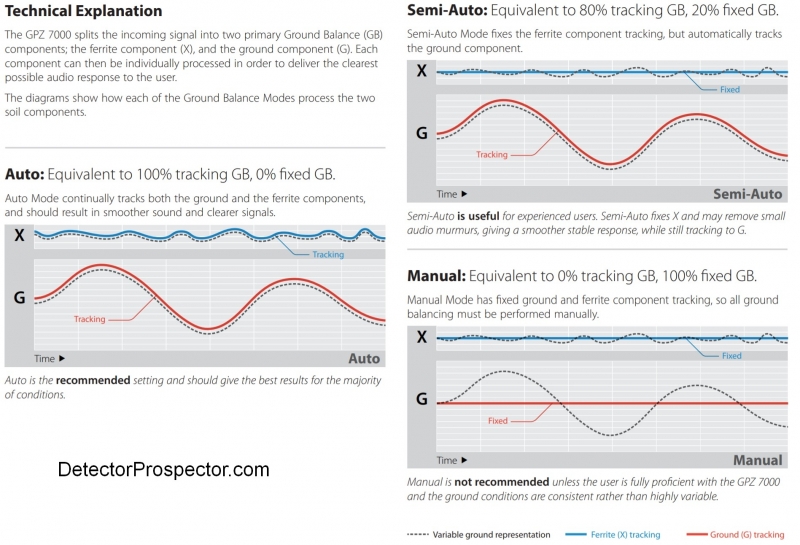-
Posts
19,761 -
Joined
Content Type
Forums
Detector Prospector Home
Detector Database
Downloads
Everything posted by Steve Herschbach
-
The BIG advantage I see in the CTX (E-Trac, Explorer, etc.) is that nearly all these hot single frequency detectors love to call deep modern aluminum as coins. You get this sweet high tone / high VDI number in my ground with most of these machines and up comes a rolled up aluminum beaver tail. It is very hard to beat a Minelab BBS/FBS machine for pure target id accuracy. This can be very important for certain parks, school grounds, etc. where every dig matters and keeping them to a minimum is important. I pay no attention to results from people back east. Unfortunately the depths seen in white Florida sand or rich loamy far dirt does not translate into results at west coast magnetite laden soils. Except that you can take a lot of east coast results and basically cut the depth in half and be in the ballpark for what I see. The V3i does do very well also for me at least. I should do more coin hunting with it. But then I always am saying I should coin hunt more and then the gold beckons. I dig tons of coins but it is nearly all accidental by-product to jewelry detecting.
-
I am sorting things out for myself. The V3i is a keeper so there is nothing in my mind to sort out. I do not consider the V3i as a wandering the hills type machine personally. Again, people are going way off track if they think this is about anything but me working out what works best for me and how. The V3i is my detector that runs my Bigfoot coil for park and sports field jewelry detecting. The ground balance system is weak compared to many detectors and the target separation is only good at best. Besides, it just strikes me as a machine I prefer to keep as pristine as possible and rolling it down dirt hills and getting tossed in the back of my truck, etc. is not something that it will be doing. The main thing though is the V3i fails the simplicity test. The MXT would fit the bill better. Machines like the MXT and in this case Impact and CTX also get nicked for being bulky and hard to stuff in a rucksack. The winners here as far as I am concerned are the Teknetics G2, Makro Gold Racer, and Minelab Gold Monster 1000. All other things being equal I prefer machines that are fairly simple and to the point. I also prefer they not be too expensive and not something I would hate to roll around in the dust and mud. If you set everything else aside my preferred detectors share a certain commonality that is apparent by just looking at them. The Makro Impact, XP Deus, and yes, even the CTX 3030 are in my questionable column. The CTX is magic in groomed parks and on salt water beaches, but that is another area where my dreams exceed reality. If I was going saltwater beach detecting tomorrow I would be more likely to grab the Garrett ATX as the CTX and when park detecting I prefer to hunt jewelry and would be more likely to grab my V3i or Gold Racer for those purposes. Right now my core list is: Minelab GPZ 7000 - Main gold nugget detector Garrett ATX - Saltwater detecting, backup for GPZ White's V3i / Bigfoot- Jewelry detecting Minelab Gold Monster 1000 - Gold nugget detecting Makro Gold Racer - General purpose detector / jewelry detecting Teknetics G2 - General purpose exploration detector Less certain futures: Minelab CTX 3030 Fisher Gold Bug 2 Nokta Impact XP Deus The Gold Bug 2 at the moment I intend on hanging on to just because I have owned one longer than any other detector and it is a classic. Right now I am more inclined to grab the Gold Monster however. Even the core has weaker and stronger members. At the moment left to my own devices the GPZ, ATX, and GM1000 would account for the vast majority of my detecting hours at this point in time. If I had to shave it to the bone right now the GPZ, ATX, GM1000, and Makro Gold Racer would get me by very well. Ultimately for me it's all about the gold, with coin and relic detecting just something I dabble in if not hunting for gold. My detector choices reflect that. Other people should consider their own priorities when it comes to making detector choices.
-
Hopefully nobody makes serious decisions based on my casual and sloppy testing! My preference would be that people do their own tests and come to their own conclusions for their purposes. This does highlight a few things for people to examine on their own however. As far as I am concerned the exercise mainly confirms three things that I already thought I knew: 1. Minelab BBS and FBS detectors are renowned for their ability to accurately discriminate high conductive coins (silver) at depth while quieting nearly all ferrous targets. They are also well known to be weak at target separation and prone to target masking. This test confirms that but does not take away from the fact that these are some of the best park and beach detectors made. Just not good in dense ferrous trash. 2. Dedicated nugget detectors like the Gold Monster beat the general purpose detectors if the only goal is detecting small gold nuggets. Yet that same edge on small gold nuggets tends to make them less useful for other types of detecting. 3. When comparing top "do-it-all" VLF machines they are all very close, and getting one to display any real clear edge is often an exercise in hair splitting. In the end I can make good finds with any of them. I therefore often fall back on ergonomics (weight, balance, audio, battery type, controls, display, etc.) as deciding factors when making my personal decisions.
-
The most frustrating thing for me when doing stuff like this is I keep wanting some detector to really blow me away. Ignore the ferrous stuff and find the good stuff. What gets hammered home instead is how easy it is for a coin on the surface to be rendered invisible by trash or hot rocks in close proximity. At best often all you get is a one way squeak from a certain direction, then nothing from other angles. The good news is that it does mean there are many good finds out the still, but well hidden by surrounding trash. The Deus may be the current pinnacle of the technology or close to it when it comes to finding things in the dense trash, but it is far from perfect and there are plenty of targets it misses also. What edge the Deus does have can be largely negated with other detectors by simply using smaller coils. For a different perspective on the Deus HF elliptical coil from a hard core relic hunter see Keith Southern's review.
-
I am sorry to hear that but it does happen a lot unfortunately. Not just campfires but old buildings burning down etc 100 years ago leave melted blobs of metal behind long after the signs of fire are gone.
-
I have too many detectors and am slowly making my way to a "thinning of the herd" this winter. This is a very informal little test I set up today for no purpose other than to see if I can sharpen my opinions about which ones stay and which ones go away. The goal is a general purpose tackle anything I might run into while wandering the hills machine. Above we have, from left to right, the Minelab Gold Monster 1000 w/10: x 5" DD, Nokta Impact w/11" x 7" DD, Teknetics G2 w/11" x 7" DD, Minelab CTX 3030 with 10" x 5" DD, Makro Gold Racer w/10" x 5" DD, Makro Gold Racer w/10" x 5" concentric, XP Deus HF 10" x 5" DD, XP Deus 11" DD And below we have a bunch of common ferrous trash on right, including some problematic items like sheet steel, bolts, etc. plus a scattering of hot rocks. There are a couple nickels, couple copper pennies, and a dime placed in the mess, one of the five in the open as a comparison. The stuff is rather randomly scattered with the coins placed so as to be hard to detect but not impossible. I am as much interested in how the hot rocks and trash responds as I am in how the coins respond. My testing is non-scientific and only intended to help me sort things out for myself, but I can offer a few observations. My criteria are my own, but do include how the detector feels on my arm and how it sounds to my ear. This session is without headphones as I often detect in quiet locations and want a detector with good, loud, clear audio as provided by an external speaker. The Gold Monster and CTX 3030 are not on the chopping block, but just for more information. The rest are all VLF type detectors and I am trying to sort out which I may be happiest swinging away in locations where I may run into hot rocks or lots of trash, while seeking non-ferrous targets. Here are some random observations, few of which are new by any means. 1. The Gold Monster excels at pulling non-ferrous items out of the hot rocks. It balances the rocks fairly well in all metal mode but this mix of intense hot rocks can be a little noisy (still way better than most machines). The iron disc setting however just shut the rocks right down and still popped on the coins. Very good. The machine fails however as a detector in dense trash. I can attest that the GM1000 does very well with scattered trash. The dense stuff however is more than the machine can handle. The high frequency helps enhance signals on flat steel in particular plus you get peculiar ghosting effects, weak signals that sound like echos of the stronger signals. So while the Gold Monster is a good nugget detector, even in scattered trash, it is not, in my opinion, a machine for pulling non-ferrous items out of classic "carpet of nails" scenarios, like old burned down cabins. 2. The Nokta Impact does extremely well overall, though the number of settings options are a plus as well as a negative. Lots of possible options to fiddle with. My main gripes are the weight/non-compact design and the odd overload signal. It is tied directly to the volume control. As you advance the volume everything gets louder, including the overload signal, until you hit 8/10ths volume. From there on up the target volume increases but the overload signal volume decreases, until at full target volume you have next to no overload signal. People who go to full volume at all times probably wonder why their detector makes no overload signal. This gets mentioned in the manual but I am sure people miss it. Even at its loudest the overload signal is very faint to my ear. Why do I care? An overload is a quick hint that you have a flat steel item like a can lid or large bolt under the coil. The Impact like other Nokta/Makro machines likes to overload on shallow targets so running sensitivity low in dense trash (39 or lower) can be advisable, and you are not going to lose depth because no machine gets any depth to speak of in dense trash. I do like the ability to adjust the ferrous volume as a separate item in the dense trash. 3. The Teknetics G2, a Gold Bug Pro variant, continues to impress me by being really simple and effective. Best speaker volume of them all, it really bangs out. However, there is no volume control at all so it can be quite the noisy machine in dense trash. 4. The CTX 3030 is amazing in its ability to just shut the trash up. If flat steel is your problem, the CTX is the answer. Almost quiet as a mouse in the trash. Unfortunately and no surprise, the CTX also suffers the worst from target masking. The CTX is superb if it has room to maneuver, but it goes almost blind in dense trash like this, and is only so-so at best when it comes to finding the targets in the hot rocks. 5. A couple Gold Racers, one early prototype and one late prototype (more or less production). At 56 kHz the Gold Racer handles the ferrous better than I would expect, but it does tend to "light up" flat steel and such and is very prone to overloading in dense trash. Again, sensitivity 39 and lower can really help. Overall however the Gold Racer holds its own with the Impact and G2, especially at picking low conductive items out of the trash. The concentric does seem to help a little with ferrous trash and hot rocks, but not so much as I hoped. No real need for most people to have the concentric coil from what I have seen. 6. The Deus is a wizard in the trash but not by the margin I expect given how popular the machine is. The 11" coil seemed on par with the other machines (the 9" is no doubt better) and the elliptical overall has the edge over all the other options. But only by a little, not a lot. Flat steel and bolts that bother other machines bother the Deus also. I tried small coils on most of the machines also. They do help getting between the trash but obviously ground coverage suffers also. That being the case I was more interested in what the stock type coils did. If I was headed for the Sierra Mountains tomorrow and wanted something light to prospect for gold with, and some ability to deal with the ever present ferrous trash left by logging operations, I would grab the Gold Monster. It bangs on gold, handles hot rocks, and can deal with normal random ferrous trash. If I thought I might bump into an old cabin or camp I wanted to hunt however, it gets to be a hair splitter. For just shutting trash up the CTX is unbeatable, but it also suffers the most from target masking. If you just want a machine that shuts up unless a good target is under the coil, hard to beat, but a lot will get missed also. Good for low to moderate trash levels but in dense trash it is going to suffer, even with a small coil. I will generally stick to parks and beach work with the CTX. I have and continue to have a hard time loving the Deus, although it is the winner in the densest trash. The external speaker volume is very poor but for me the main problem is simplicity and priorities. I dream a lot about hunting old sites with lots of trash chasing a gold coin, but the fact is it is probably the type of detecting I do least. With apologies to the relic hunters, the stuff most people show on forums like the Dankowski forum would just go in the trash at my house. Gold, silver, and platinum in all forms (nuggets, coins, jewelry), plus coins made of anything else, sums up what I detect for. If hunting dense trash was something I did constantly the Deus would be a no-brainer, but as rare as it is for me to engage in relic hunting, something like a G2 does nearly as well from what I am seeing, or at least well enough to suit me. I like the idea that if my battery goes dead I just put another battery in the G2 and back in business. No separate charging of coil, controller, and headphone. As much as I like playing with complex detectors when it gets down to my detecting I do prefer simplicity. The bottom line for the Deus is I was hoping the 14/28/74 kHz elliptical might be as good as a 19 kHz G2 and 45 kHz Gold Monster combined. The Deus has the edge in the dense trash but the Gold Monster has an even bigger edge on the gold nuggets, so having my cake and eating it also all in one detector still involves compromises in real life. For a different perspective on the Deus HF elliptical coil from a hard core relic hunter see Keith Southern's review. The GM1000 and CTX 3030 are keepers for different reasons. I have not given up on the Impact and Gold Racer by any means though between those two I still get along best with the Gold Racer for my particular purposes. The Deus is really good at what it does best. The machine that impressed me the most does so by being so simple. The two knob G2 combination of lightweight, excellent ergonomics, loud audio, and simple but effective operation make it very hard for me not to like the machine. It is not "the best" per se but the G2/Gold Bug Pro still hits a certain sweet spot for me personally. For a trip into the hills to prospect for gold but to also hunt a cabin site or old camp, it is a toss up for me at the moment as to which I would grab, the Gold Racer or the G2. Gun to head right this moment, I guess it's G2. Tough call though. Anyway, that narrowed it down a bit and gives me more directions to pursue going forward as far as what to test and how. I will finish up again by pointing out I am not trying to prove anything to anybody but some of the observations may be helpful to some people - so there you go.
-
The CTX and GPZ rechargeable batteries interchange just fine. The CTX battery will run the GPZ about a half day - I always have one with me for backup. And the GPZ battery will nearly double the operating time of the CTX. The CTX AA battery pack WILL NOT work with the GPZ.
-
I have just been notified by Jim Foley that that the Alaska Gold Forum is down. He is working hard on a solution but it does not sound very hopeful at the moment. The AGF is one of the older forums and has a lot of Alaska information in particular that it would be a shame to lose. Good luck Jim, hopefully something works out.
-

My Own Gold Monster Shaft Modification
Steve Herschbach replied to Cabin Fever's topic in Minelab Metal Detectors
OK, now that is real nice. If I had not had a Golden Mask rod sitting around for a year looking for a use I would do this instead, and frankly I like your solution better. Simple and to the point - thanks for posting! -
This subject has been mentioned before here but it seems some people are having issues that may go beyond the "norm", whatever that is. See Bill Southern's forum at http://nuggetshooter.ipbhost.com/topic/30883-mike-c-falsing-fix/ My 5" coil starts to exhibit touch sensitivity at Manual Sensitivity level 9, becoming more pronounced at 10. I have had no issue of note with my 10" coil, which is the coil I use almost exclusively. My impression has been this touch sensitivity in the 5" coil is inherent in the High Gain/Audio Boosted design of the GM1000. For me the solution had been to either lower the Gain/Sensitivity or to just get down and dirty with coil control. See my post from May at http://www.detectorprospector.com/forum/topic/3614-understanding-the-sensitivity-control-on-the-gold-monster-1000/?do=findComment&comment=39955 as regards all this. Any experienced detectorist knows a loose coil cable near the coil can create problems, and Mike Conner has suggested affixing the coil cable on the 5" coil as firmly as possible to prevent movement in the cable, with what he reports as being good results. This has been a non-issue for me as I run the 10' coil almost exclusively and my sensitivity when in manual ranges between 6 - 8 with rare forays to higher levels as described in my recent thread here. My main concern is reports of 5" coil touch sensitivity at much lower Gain/Sensitivity levels than what I have experienced. So the big question for you Gold Monster owners (no second hand reports please) - what coil sensitivity are you experiencing and at what Gain/Sensitivity level does it start to exhibit with each coil? Have you tried more firmly affixing the lower cable to the rod, and has it helped?
-
Is this what you are trying to post?
-

Gold Monster / Golden Mask Rod Adaptation
Steve Herschbach replied to Steve Herschbach's topic in Minelab Metal Detectors
Almost there. Better fitting clamps, upper rod extended 6" with 3/4" PVC pipe, and drilled to fit Golden Mask armrest. About 32" collapsed and 5 feet fully extended! Weighs 3 lbs 7.7 oz (3.48 lbs) or 1.58 kg with rechargeable batteries installed. A few little tweaks yet to do but basically this is a done deal. -
Garret has changed the features and control panel, the main addition being a master volume control. Adding this feature required that various button assignments be shifted around. Here is the newest version.... And here is the old prototype version....
-

New Metal Detectors Machines 2017
Steve Herschbach replied to Shelton's topic in Metal Detector Advice & Comparisons
Time for a recap and update to original post. How did it all shake out? First Texas (Bounty Hunter, Fisher, Teknetics) - The Fisher CZX was targeted for 2016 but is running late. Not even rumors now and something would have to happen soon to make it by the holiday purchasing season. Maybe 2018 now. First Texas are basically the odd guys out now with nothing new in a very long time. I am not sure what to make of the announcement that a new PI is in the works. This could lead be simply a parallel product track or a sign that the CZX project has run into a wall. Garrett - The new coils/versions of ATX finally appeared, and new machine (AT Pro 2?) announced for 2017 happened as expected - the Garrett AT Max. There was also the introduction of the Z-Lynk wireless system. That presumably wraps a successful model introduction year up for Garrett. Minelab - From Codan 2016 Annual Report, page 9: "In response to customer demand, two new products are planned for release in FY17. A larger coil for the GPZ 7000® will give a significant depth increase over the standard coil. In addition to this, an entry-level gold detector will be released to the African market at the end of 2016. This product has been specifically designed for the African market to fill a gap in our product range, and is expected to quickly take market share from competitors." This of course turned out to be the Minelab Gold Monster 1000. There was also the introduction of the Pro-Sonic wireless system. Minelab tossed in a last minute surprise also with another new model to be announced in September. Nokta/Makro - The new selectable frequency detector announcement due by year end happened as expected - the Nokta Impact. These folks are on a roll so look for waterproof detectors and possibly a PI in 2018. XP - The long awaited XP V4 update for the Deus happened as expected - Deus V4. Nothing else on the horizon except possibly a dedicated nugget detector version like the Depar DPR 600 for the U.S. market. White's - Nothing was really expected for 2017 so no surprises so far. If anything was planned for year end I would expect we would be hearing about it before too soon. Barring any last minute holiday surprises the Minelab new model to be announced in September should wrap it up for the year. -
eml is an email file, not a video format.
-

Gold Monster / Golden Mask Rod Adaptation
Steve Herschbach replied to Steve Herschbach's topic in Minelab Metal Detectors
Only place I could find it was direct from Bulgaria on eBay. Had no issue, prompt delivery, excellent product. Price went up a little since I bought it. http://www.ebay.com/itm/Universal-Golden-Mask-Telescopic-Handle-for-metal-detectors-/122630034975?hash=item1c8d51d61f:g:PMwAAOSwrhBZGedY http://www.ebay.com/itm/New-Universal-Golden-Mask-Telescopic-Handle-/263083698389?hash=item3d4102a8d5:g:BxEAAOSwQJhUi43Y -

Recent Discovery - Protek Detector
Steve Herschbach replied to Mark Gillespie's topic in Metal Detector Advice & Comparisons
Other than a couple for sale I can't find anything about this one. -
"The universe as we know it shouldn’t exist. Unlocking the reasons why may depend on once again striking gold in a mine buried a mile underground in rural South Dakota.The largest U.S.-based particle physics experiment ever is now under construction in the old mine in Lead, S.D., breathing new life into the small town more than 140 years after the Black Hills gold rush drove its founding. Over the next 10 years, workers will remove more than 870,000 tons of rock and install a four-story high, 70,000-ton neutrino detector, while the lab's Illinois counterpart also undergoes significant renovations. The project will cost more than $1 billion, but scientists hope the payoff from about 12 million neutrinos per second passing through the detector will be far larger, tantamount to striking gold on a universal scale." Read the rest at USA Today Construction Details Here
-
I have been advised that if someone breaks the ferrite ring, just put the pieces in a plastic bag and continue to use it – this will still work as it is the amount of ferrite material that is important, not the actual shape that is important. This will be better than using another ferrite that is the incorrect material. Just because ferrite rings look the same, it doesn’t mean they will be suitable – they could actually degrade performance if the wrong material type is used. From the Minelab Knowledge Base Article at http://www.minelab.com/__files/f/313856/4907-0942-1 Brochure, GPZ 7000 Software Upgrade No.2 EN.pdf "A ‘dust iron’ toroid suitable for the HF frequency band (e.g.1–30MHz with an initial permeability of between 6 and 10) has been carefully selected. It is recommended to use this specific Minelab accessory, only. Alternate ferrites may significantly degrade ground balance quality." As far as the ferrite and personal use, I do it myself at the start of new sessions because it is the best recommended operating practice. I can't swear I see differences between whether I use it or not, but I also do not usually see a need to fasten my seat belt every time I drive. Why bother today? Because maybe today is the day it will help! As far as my ground goes and referring back to http://www.minelab.com/__files/f/313856/4907-0942-1 Brochure, GPZ 7000 Software Upgrade No.2 EN.pdf - "Auto is the recommended setting and should give the best results for the majority of conditions" GPZ 7000 Tips for Better Ground Balance Gold Detecting in Difficult Ground Conditions
-

Gold Monster / Golden Mask Rod Adaptation
Steve Herschbach posted a topic in Minelab Metal Detectors
I purchased a Golden Mask telescoping rod with the intent of using it for my Deus HF elliptical coil. XP placing the battery in the trapezoidal lower rod section however made an adaptation more trouble than it is worth for something I am not sure I will keep anyway. I decided to repurpose it instead to the Minelab Gold Monster 1000 in an attempt to make it as easy as possible to collapse down and put in a rucksack. The arm cup removal is easy. Just remove the bolts. The grip/handle however is both screwed together and glued. Have to give them credit - beautifully made rod assembly. Some heat from a hair dryer and careful prying got the grip assembly off the rod. The upper rod is thicker than the standard rod diameter and so the neat little clamps Minelab includes with the GM1000 will not work. Instead standard hose clamps will serve until I get some that fit better. The upper rod is not quite long enough to get the proper spacing for the armrest, so this is a mockup until I find a short piece of rod the correct diameter to install in the upper rod for a little extra length. Roughly 30" long when collapsed. The coil needed to be shimmed with an extra rubber washer. I used the skinny little Golden Mask plastic bolt but will drill the isolator rod out to accommodate the Minelab bolt later. Near final product, with way more length fully extended than I need at my height of 5'11" but that is good for working overhead cut banks and poking around in the brush. Click all photos for larger versions. Once I get the rough edges finished this will be a sweet little backpacker unit. -
The main benefit of the ferrite is in locations totally lacking in it, like an alkali flat. The ring provides the ferrite balance, and the new Semi-Auto update allows you to lock the ferrous balance in, otherwise the detector will track to the salt and lose the ferrite balance. For ground with naturally occurring ferrite, like most soils in the U.S., you will see little to no benefit to using the ferrite. But it sure does not hurt and is not a bad habit to develop. Most (all?) detectors have a factory set ferrite reference point, so it is interesting that the GPZ tracks ground ferrite content separately. Yet waving the ferrite under the coil and locking the ferrite balance channel is not so different that just providing a factory preset point. Just one of those finer points technologically in the GPZ that is different than most detectors, and no doubt some good technical reason for why it is the way it is. I just don't know the reason, except to guess it helps under certain ground conditions to track the ferrite content as it actually is in the ground instead of a preset factory setting. From http://www.minelab.com/__files/f/313856/4907-0942-1 Brochure, GPZ 7000 Software Upgrade No.2 EN.pdf Click for larger version...
-

Most Effective 19 Inch Coil Cover
Steve Herschbach replied to fredmason's topic in Minelab Metal Detectors
Hi JW, My one report on the GPZ19 so far is at It did get me one nugget on that outing I missed with the GPZ14 but did I miss it because it was too deep - or did I just miss it? My gut feeling is that as is usually the case nearly all gold a GPZ19 can hit can also be hit by a GPZ14. I have a suspicion, unfounded, that the best depth gains will be seen on the kind of gold that the GPZ favors anyway - porous and specimen gold. So that big coil I am guessing will get the best results on large specimen gold as opposed to solid slugs. For me this is a niche coil for oddball situations, not for constant use, as most of my gold tends to be under 1/4 oz and as a rule not really deep. However, I do have a site in mind for my very next outing however so we will see. Just another item I am learning more about over time. I promise I will have more to report in the future. I am juggling too many detectors right now (Impact, Deus HF, GM1000, etc.) which kind of drags things out as I bounce from one idea to another. I think I sense a hidden question here. What about this coil for you? I am seeing small shallow gold so other than ground coverage I can't see how this coil can help you much. -
If you just showed me the pictures with no back story attached I would say melted aluminum. I have fished globs like that out around campfire sites many a time. Melted lead/zinc from batteries is also common. So question number one - is it heavy for the size? Some Common Ore Test Procedures
-

No Tracks Since The Upgrade - GPZ
Steve Herschbach replied to fredmason's topic in Minelab Metal Detectors
Minelab GPS For CTX And GPZ With Notes On XChange2 GPS Mapping With The Minelab CTX And GPZ Detectors ( Part Two ) I really need to get part three done and posted. I am now procrastinating however waiting to see if the upgrade Minelab makes to XChange2 has things which would make my final post in the series obsolete before I post it.

